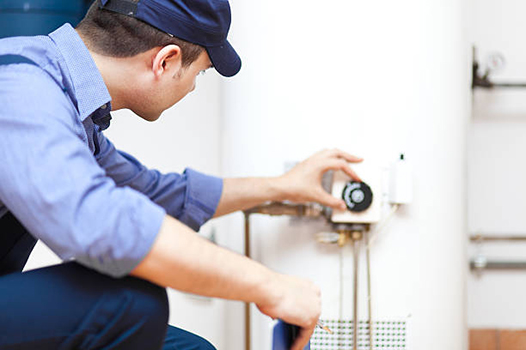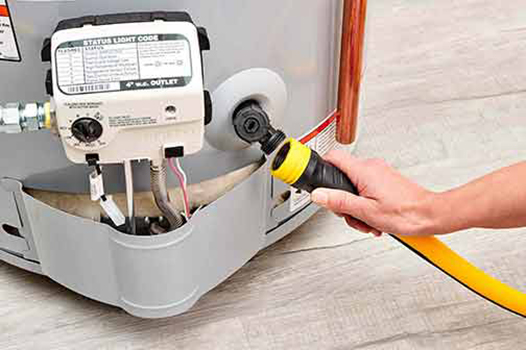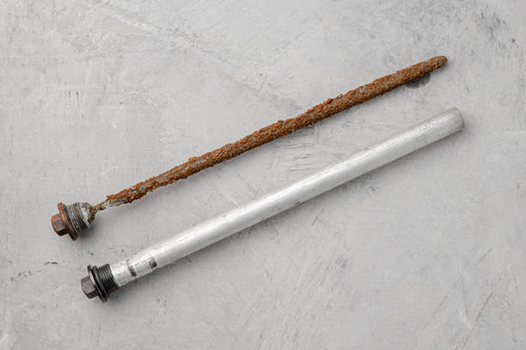
Maintaining your water heater is not only important for its longevity but also for reducing energy consumption and saving money on your monthly utility bills. Here we will cover various maintenance tasks and precautions that will help you optimize the efficiency of your water heater and ultimately lower your utility expenses.
Understanding the Importance of Water Heater Maintenance
Water heaters are one of the most essential appliances in our homes, providing hot water for various daily activities such as bathing, cooking, and cleaning. However, without proper maintenance, they can become less efficient over time, resulting in increased energy consumption and higher utility bills.
Maintaining your water heater ensures that it operates at peak performance, maximizing its energy efficiency and extending its lifespan. By implementing these essential maintenance tips, you can minimize energy waste, reduce the risk of breakdowns, and ultimately save money on your monthly expenses.
Determine the Type of Water Heater
Before diving into the maintenance tips, it’s crucial to identify the type of water heater you have. The most common types include:
- Conventional storage tank water heaters
- Tankless water heaters
- Heat pump water heaters
- Solar-powered water heaters
Each type may have specific maintenance requirements and considerations, so read your water heater’s manual or contact a local plumber if you are unsure about its particular needs.
Regularly Check the Temperature and Pressure Relief Valve
The temperature and pressure relief valve is a critical safety feature in your water heater. It prevents excessive pressure buildup and potential explosions. To ensure its proper functionality:
- Check the valve annually for leakage or signs of corrosion.
- Activate the valve a few times to make sure it is working correctly.
- If you notice any issues, such as leaks or faulty operation, contact a professional plumber to repair or replace the valve.

Flushing and draining the tank at least once a year helps minimize sediment accumulation and prolongs the lifespan of your water heater.
Flush and Drain the Tank Regularly
Sediment and mineral buildup in the tank can negatively impact your water heater’s efficiency, leading to higher energy consumption. Flushing and draining the tank at least once a year helps minimize sediment accumulation and prolongs the lifespan of your water heater. Here’s how to do it:
- Turn off the power supply to the water heater.
- Attach a hose to the drain valve located at the bottom of the tank.
- Place the other end of the hose in a suitable drainage area.
- Open the drain valve and allow the tank to empty fully.
- Once the tank is empty, close the drain valve and remove the hose.
- Turn on the cold water supply to the tank to flush out any remaining sediment.
- Close the water supply valve and refill the tank.
By regularly flushing and draining your water heater, you can prevent sediment buildup and improve its energy efficiency.
Insulate Your Water Heater
Insulating your water heater is an effective way to reduce heat loss and improve energy efficiency. Older water heaters or those located in colder areas can benefit greatly from insulation. Follow these steps to insulate your water heater:
- Measure the height, circumference, and area of your water heater.
- Purchase an insulation blanket or jacket suitable for your water heater’s dimensions.
- Carefully wrap the insulation material around the tank, avoiding the thermostat and other control areas.
- Secure the blanket or jacket with tape or straps, ensuring a snug fit.
Insulation helps retain the heat within the tank, reducing standby heat loss and saving energy.

Regularly inspecting and replacing the anode rod helps prevent corrosion, maintaining the efficiency and lifespan of your water heater.
Check and Replace the Anode Rod
The anode rod plays a crucial role in preventing the corrosion of your water heater’s interior lining. Over time, the anode rod deteriorates and should be checked regularly, especially in areas with hard water. Here’s how to inspect and replace the anode rod:
- Locate the anode rod’s access point, usually on top of the water heater.
- Using a suitable tool, such as a socket wrench, unscrew the anode rod and carefully remove it.
- Check the condition of the rod. If it is heavily corroded or less than 0.5 inches thick, it should be replaced.
- Purchase a new anode rod of the appropriate size and material (magnesium or aluminum/zinc alloy).
- Apply plumber’s tape on the threaded end of the new anode rod to prevent leaks.
- Screw the new anode rod into place and ensure it is tightened securely.
Regularly inspecting and replacing the anode rod helps prevent corrosion, maintaining the efficiency and lifespan of your water heater.
Check for Leaks
Water leaks can cause significant damage and increase your utility expenses. Regularly inspect your water heater and the surrounding area for any signs of leakage. Check for water puddles, dampness, or corrosion on pipes and fittings. If you detect a leak, address it promptly by tightening loose connections or contacting a plumber for a repair or replacement of your water heater.
Maintain a Suitable Temperature Setting
Adjusting your water heater’s temperature setting can lead to notable energy savings. While the ideal temperature may vary depending on your needs, most households find a temperature between 120°F (49°C) and 140°F (60°C) comfortable.
However, avoid setting the temperature too high, as it can scald and waste energy unnecessarily. Finding the right balance ensures you have hot water while minimizing energy usage.
Regularly Inspect the Exhaust Vent
If you have a gas-powered water heater, inspecting the exhaust vent is crucial for safety and efficiency reasons. A blocked or poorly functioning exhaust vent can cause the release of harmful gases, such as carbon monoxide, into your home.
Regularly check the vent pipe for any obstructions, such as debris or bird nests. Ensure that it is connected securely and that the joints are properly sealed. If you suspect any issues, contact a licensed professional to inspect, clean, or repair the exhaust vent.
Conclusion
Proper water heater maintenance is essential for lowering your utility expenses and ensuring reliable hot water supply. By following the tips outlined in this article, you can optimize your water heater’s efficiency, extend its lifespan, and reduce energy consumption.
Remember, if you are unsure about any maintenance tasks or encounter significant issues with your water heater, it is always recommended to seek the assistance of a professional plumber or HVAC technician. Investing time and effort into regular maintenance will ultimately save you money and provide peace of mind.